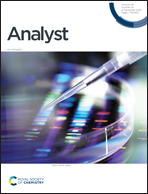Time-domain photoacoustic waveform analysis for glucose measurement
Abstract
Photoacoustic (PA) effect is the product of light-ultrasound interactions and its time-domain waveform contains rich information. Besides optical absorption, the PA waveform inherently consists of other mechanical and thermal properties of the sample. They also have correlation with the target composition but have not been utilized in conventional PA spectroscopy. In this article, we propose a new concept named time-domain photoacoustic waveform spectroscopy (tPAWS) for chemical component quantification. It employs multiple variables inherently contained in the PA waveform excited by a single wavelength laser to extract informative features. The demonstration of glucose measurement in human blood serum (HBS) shows superior sensitivity and accuracy enhancement, compared to conventional amplitude-based PA measurement and NIR spectroscopy. Thanks to the sensitivity and accuracy of tPAWS, multiple wavelength sources and complex instrumentation used in conventional spectroscopic sensing methods can be avoided. TPAWS, as a novel physics-inspired sensing method, shows great potential for complementing or surpassing the current spectroscopic methods as a new sensing technique for chemical analysis.



 Please wait while we load your content...
Please wait while we load your content...